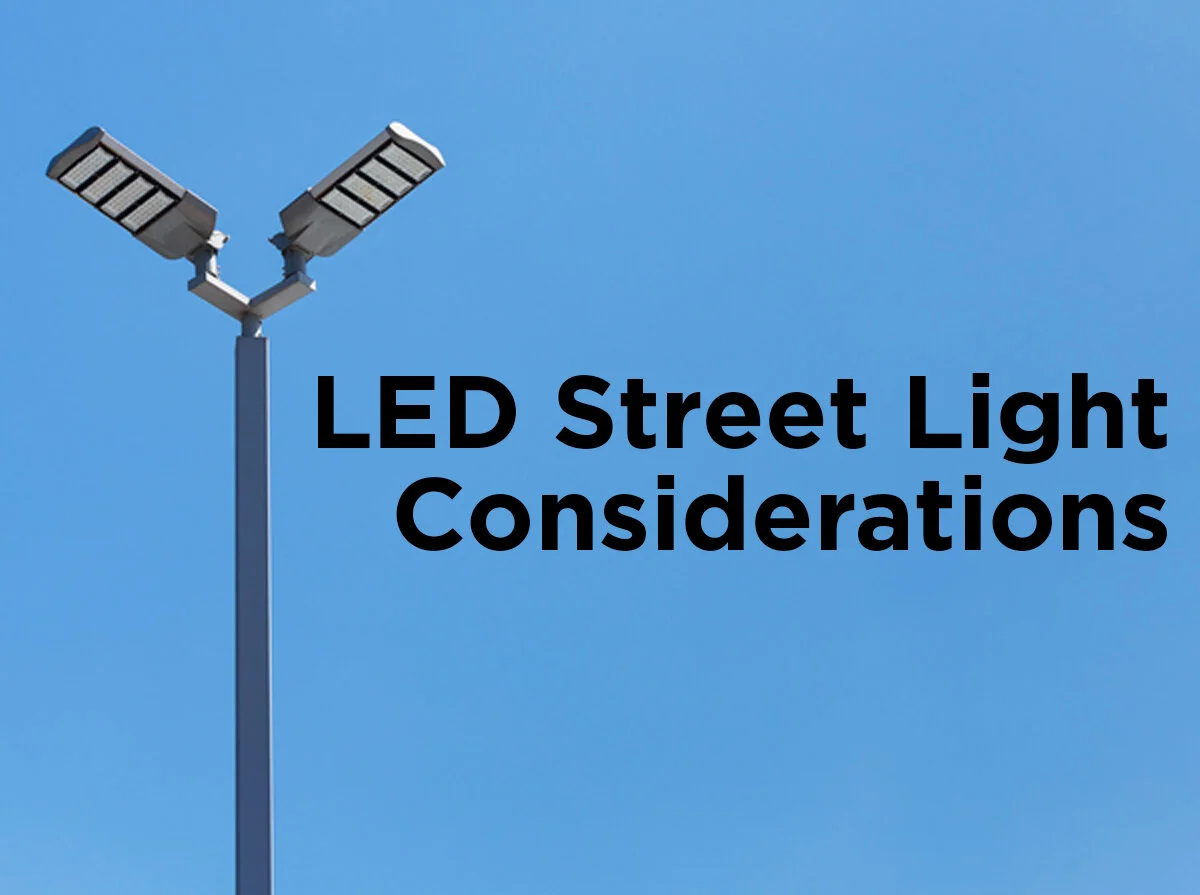LED Street Light Considerations
As LED technology continues to manifest in different facets of our daily lives, one place that they are becoming increasingly more popular are the streets. Traditionally, our streets have been illuminated by high-pressure sodium lamps, which utilize excited sodium particles to produce light. LED street lights have proven to have several benefits over these lamps, including producing more light per watt and sporting longer lifetimes; however, there are some drawbacks to these lights, such as glare. Let’s get a better understanding of LED street lights and how they are quickly becoming the new lights that guide our paths.
Cost Considerations
Currently there are a little over a dozen cities and states in the U.S. that have installed some form of LED street lighting. Although more cities and states are jumping on the LED bandwagon, much of the apprehension can be attributed to cost. The initial cost for installing LEDs can be 4-6 times more expensive than HPS lamps. For example, the cost to install 1000 new LED luminaires that is meant to replace 1000, 100 watt HPS street lamps is approximately $215,000; this amount includes the installation, cost of LED luminaries, and crew. However, the savings in energy and maintenance are around $55,000 annually.
The money it costs to retrofit street lights can come from a variety of sources. For example, some cities offer conversion programs, state government, and federal grants to pay for the lights. Another option is manufacturing programs where large street lighting manufacturers finance retrofitting, similar to a loan, and the money is paid back over a number of years.
HPS vs LED Street Lights
LED street lights offer a number of benefits. They have a longer lamp life than HPS lamps. The lights currently last between 10-15 years and, unlike HPS lamps, they do not experience lumen depreciation as sharply. Lumen depreciation is a process that occurs when the lumen output produced by a light source begins to diminish over time. HPS lamps experience quicker lumen depreciation after as little as 2,000 hours, creating higher maintenance costs.
As we have learned from numerous posts, LEDs are an incredibly energy-efficient light source. According to the Environmental Security Technology Certification Program (ESTCP), after monitoring HPS street lights for a year and then retrofitting them with comparable LED street lights, they found that the LED system consumed around 75% less electricity than the previous HPS street lights. Another major benefit in LED street lights is they have a high light output regardless of temperature, as HPS lamps typically produce less visible light during colder temperatures. Not only is the light output of an LED street light better than an HPS lamp, but the CRI is much higher and light is spread more evenly with an LED. Most LEDs have a CRI rating between 70-92 whereas HPS lamps fall between 20-30 on the CRI scale. The scale measures light quality from 0-100. Lastly, it should be noted that HPS lamps do not start at full brightness. They slowly generate light after the preliminary ignition, whereas LEDs turn off and on without a ramping or light generating phase.
What are the Issues?
As we have already discussed, the initial cost of installing LED street lights is rather expensive, which is one of the issues many cities and states face when choosing to retrofit their street lights. Another major concern for these lights is their tendency to glare.
In some cities, overly bright LED’s are being installed as opposed to the warm glow that you’re used to seeing. The excessive glare and brightness produced from blue-white or uneven LED street lights can be disruptive to drivers, and even those walking at night or sleeping in nearby homes. The blue spectrum of light emitted by LEDs can also negatively affect your natural circadian rhythm, requiring an adjustment to daily life. In New York for example, there is a $75 million plan to change all street lights in the five boroughs to LEDs, a change many people are complaining about because the lights are too bright, and do not emit a warm glow, but rather a more stark white light. Citizens claim that the new lights are causing the streets to appear more like daytime than night.
Improvement
Even with some of the complaints surrounding LED street lights, there are ways to combat these issues. Cities can choose to use more ambient toned LEDs or LEDs with lower illumination levels. Using street lights with a narrower field of illumination to maintain beam control may also be an option. Another possibility being considered is incorporating a special diffuser lens on the lights to reduce glare.
Whatever your take on LED street lamps may be, one thing is certain: their brightness is growing. What are your opinions on the rise of LED street lights? Leave your questions in the section below or drop us a line on Facebook, Twitter, LinkedIn, Pinterest or Instagram!







